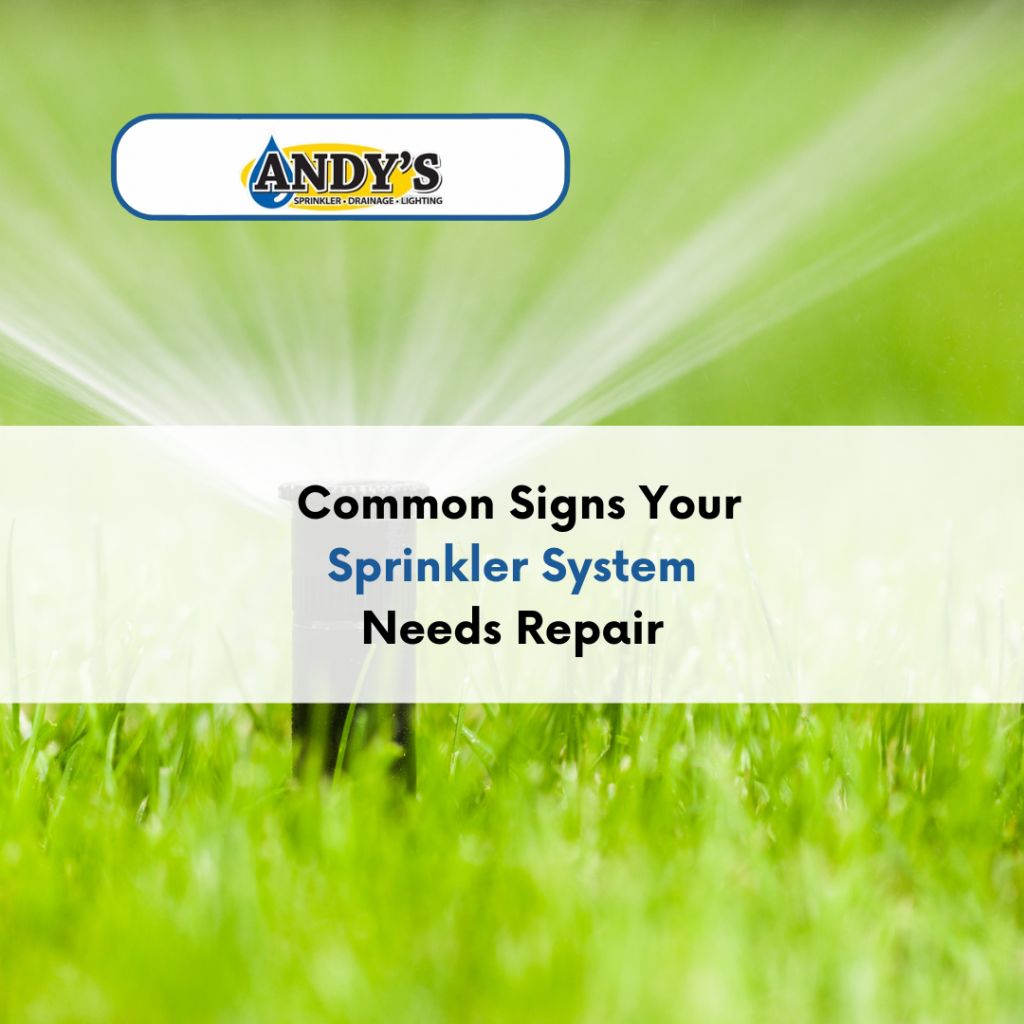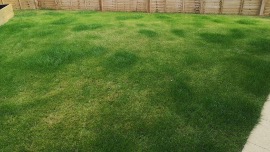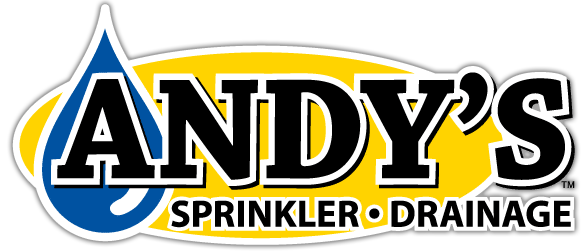
Common Signs Your Sprinkler System Needs Repair
A well-functioning sprinkler system is essential for maintaining a vibrant, lush lawn and garden. However, like any mechanical system, sprinklers can develop issues over time that affect their performance and efficiency. Ignoring these problems can lead to uneven watering, increased water bills, and, in the worst cases, damage to your landscape. Recognizing the early signs of trouble can save you time, money, and effort in the long run.
At Andy's, our technicians specialize in the installation and repair of sprinklers, as well as drainage systems and outdoor lighting. With years of experience under our belt, we know just how crucial it is to address sprinkler system issues promptly and effectively. This article will guide you through the common signs indicating that your sprinkler system may need repair, helping you to identify and solve problems before they escalate.
Understanding these signs is the first step in ensuring your sprinkler system remains in top condition, providing optimal coverage and performance. Whether it's inconsistent water pressure, unusual noises, or visible damage, knowing what to look out for will enable you to take proactive measures and maintain a healthy, thriving lawn. Read on to discover the key indicators that your sprinkler system might require professional attention.
Common Signs Your Sprinkler System Needs Repair
Ensuring your sprinkler system remains in good condition is essential for keeping your lawn looking its best. Various tell-tale signs can indicate that your system needs repair. Addressing these issues promptly will save you time and money in the long run.
Leaking Sprinkler Heads
Leaking sprinkler heads are one of the most visible signs that your system needs attention. If you notice water bubbling up around the heads even when the system is off, this is a clear indication of a leak. Leaks can waste a significant amount of water, leading to higher water bills and uneven watering.
Signs of Leaking Sprinkler Heads:
- Puddles of water around the sprinkler head area.
- Soggy or wet spots on your lawn.
- Visible water flow when the system is off.
Leaky heads can occur due to cracked casings, seals, or damaged pipes. Identifying and fixing these leaks promptly ensures your system remains efficient.
Poor Water Pressure
Water pressure issues are another common problem in sprinkler systems. Both high and low water pressure can affect the performance of your system.
Signs of Poor Water Pressure:
- Sprinklers not popping up fully.
- Weak or uneven spray patterns.
- Inconsistent coverage area.
Low water pressure can occur due to clogged pipes, blocked sprinkler heads, or issues with the main water supply. High water pressure, on the other hand, can damage your system, causing it to wear out faster. Balancing the water pressure ensures even watering and prolongs the life of your sprinkler system.
Sprinkler Head Malfunctions
Properly functioning sprinkler heads are essential for even water distribution. Malfunctions can disrupt the watering patterns and cause patchy areas in your lawn.
Common Malfunctions:
- Sprinkler heads not rotating or stuck in one position.
- Uneven spray patterns or no water coming out.
- Spray heads that are too low or high above the grass level.
These issues can arise from mechanical failures, clogs, or improper installation. Regular inspection and timely repair of malfunctioning sprinkler heads can help maintain consistent watering across your lawn.
Zones Not Activating
A sprinkler system is often divided into different zones to ensure targeted watering. When one or more zones fail to activate, parts of your garden may remain dry, leading to unhealthy grass and plants.
Signs That Zones Are Not Activating:
- Entire sections of your lawn remain dry.
- Specific areas are consistently under-watered.
- The control panel shows errors or does not switch to the next zone.
Non-activating zones can result from electrical issues, faulty wiring, or malfunctioning control valves. Addressing these problems immediately ensures that all sections of your lawn receive the necessary water.
Water Pooling Around Sprinkler Heads
Water pooling around sprinkler heads can indicate several underlying issues, such as leaks, improper installation, or issues with the water line.
Indications of Water Pooling:
- Persistent puddles or soggy areas around heads.
- Increased water bill without additional usage.
- Visible moisture or wet soil when the system is off.
Pooling can damage your lawn and impact plant health. It can also attract pests, making it crucial to fix these issues soon after they are detected.
Uneven Water Coverage
Uneven water coverage means some areas of your lawn are getting more water than others. This inconsistency leads to patchy grass and plant growth.
Symptoms of Uneven Coverage:
- Dry patches in areas supposed to be covered.
- Overly wet areas create muddy spots.
- Inconsistent growth patterns in your garden.
This issue may be due to misaligned sprinkler heads, clogged nozzles, or an unbalanced system. Adjusting the head alignment and clearing any blockages can help restore even coverage across your lawn.
Strange Noises During Operation
A well-functioning sprinkler system should run quietly. Strange noises can indicate mechanical problems that need to be addressed.
Noises to Watch Out For:
- Loud hissing or whistling sounds.
- Repeated clicking or banging noises.
- Buzzing or humming from the control panel.
These sounds may stem from high water pressure, air trapped in the system, or faulty components. Investigating and fixing the source of the noise ensures smoother operation and prevents further damage to your system.
Control Panel Issues
The control panel is the brain of your sprinkler system, managing when and how much water is applied to different zones. Problems with this panel can disrupt the entire system.
Common Control Panel Problems:
- Unresponsive buttons or displays.
- Error messages or blinking lights.
- Timers not working or incorrect scheduling.
Control panel issues could result from electrical faults or programming errors. Ensuring the panel works correctly is vital for the overall efficiency of your sprinkler system.
Rising Water Bills
An unusual spike in your water bills can signify hidden issues with your sprinkler system. Leaks, poor water pressure, and malfunctioning sprinkler heads can cause excessive water use.
Signs That Your Bills Are Rising Due to Sprinkler Issues:
- No change in usage patterns but noticeably higher bills.
- Receiving notifications from your water utility about increased usage.
- Constantly running the water meter even when the system is off.
Monitoring your water bills can help you spot inefficiencies early and prevent unnecessary costs. Promptly addressing the underlying issues keeps your water usage and bills in check.

Electrical Issues
Electrical problems in your sprinkler system can stop it from working entirely or cause intermittent activation. These problems often need expert attention to resolve.
Indicators of Electrical Issues:
- The system is not turning on or off as programmed.
- Tripped circuit breakers.
- Burnt smell or visible wiring damage.
Electrical faults can be potentially hazardous. Ensuring that the wiring and electrical components are in good condition helps maintain the safe operation of your sprinkler system.
Identifying and addressing these common issues early can save you time and money in the long run. Knowing what to look for and taking timely action ensures that your lawn remains healthy and vibrant while your sprinkler system operates efficiently. Proper maintenance and repair not only enhance system performance but also extend its lifespan, providing you with a lush, green lawn all year round.
Broken or Damaged Sprinkler Heads
Over time, sprinkler heads can get damaged by lawnmowers, foot traffic, or weather conditions. Broken or damaged heads can result in water wastage and inefficient watering.
Signs of Damaged Sprinkler Heads:
- Visible cracks or chips on the sprinkler head.
- Water spurting out unevenly or creating a mist.
- Sprinkler heads are stuck in the ground or are not popping up.
When a sprinkler head is damaged, it can't distribute water properly, leading to dry patches or overwatered areas. Inspecting and replacing damaged heads ensures even water distribution and efficient system performance.
Frequent System Shutdowns
Frequent shutdowns of your sprinkler system indicate underlying issues that require immediate attention. This problem can arise from several factors, such as electrical faults, programming errors, or component failures.
Symptoms of Frequent System Shutdowns:
- System turns off randomly during operation.
- The control panel shows errors or warning messages.
- Inconsistent watering schedules despite correct programming.
These shutdowns can disrupt the watering pattern, affecting your lawn's health. Diagnosing and resolving the root causes ensures your system runs smoothly, maintaining a consistent watering routine.
Inconsistent Spray Patterns
Inconsistent spray patterns from your sprinkler system can leave some areas soaking wet while others remain dry. This inconsistency can result from various issues, such as clogged nozzles, misaligned sprinkler heads, or pressure problems.
Signs of Inconsistent Spray Patterns:
- Random dry spots or overly wet areas.
- Uneven growth of grass and plants.
- Visible clogs or dirt in the nozzles.
Adjusting the spray pattern, cleaning the nozzles, and ensuring proper head alignment help achieve even water distribution, promoting uniform growth across your lawn.
Valve Malfunctions
Valves control the flow of water through your sprinkler system. When valves malfunction, it can lead to irregular watering, overwatering, or system failure.
Indicators of Valve Malfunctions:
- Sprinkler zones not turning on or off as scheduled.
- Persistent water flow even when the system is off.
- Hissing or gurgling sounds from the valve box.
Valve issues can stem from electrical problems, debris buildup, or worn-out components. Repairing or replacing faulty valves ensures your sprinkler system operates as intended, providing consistent and efficient watering.
Issues with Timers and Controllers
Timers and controllers are essential for automating your sprinkler system. Problems with these components can disrupt your watering schedule and result in overwatering or underwatering.
Common Issues with Timers and Controllers:
- Incorrect timing or failure to activate zones.
- Unresponsive buttons or display errors.
- The system is running during restricted hours, leading to penalties.
Addressing issues with timers and controllers can typically involve reprogramming, battery replacement, or component repairs. Ensuring these components are in working order maintains your system's efficiency and adherence to watering regulations.
Water Pressure Fluctuations
Fluctuations in water pressure can cause your sprinkler system to deliver inconsistent water coverage. Both high and low-pressure issues can affect performance and lead to water waste.
Signs of Water Pressure Fluctuations:
- Sprinkler heads not fully extending or retracting.
- Water spray pattern varies widely.
- Noticeable changes in water output from different sprinkler heads.
Balancing water pressure involves checking for obstructions, adjusting pressure regulators, and ensuring the main water supply functions correctly. Stable water pressure helps maintain even watering and prolongs the lifespan of your sprinkler components.
Draining Issues
Ineffective drainage within your sprinkler system can lead to water pooling around heads and causing damage over time. Draining issues can also result from obstructed pipes or poor landscaping.
Indications of Draining Problems:
- Persistent standing water around sprinkler heads or in the lawn.
- Muddy or soft spots indicating trapped water.
- Reduced system efficiency and increased water usage.
Fixing drainage issues may involve clearing obstructions, improving soil grading, or installing additional drainage solutions. Proper drainage prevents waterlogging, root rot, and other landscape problems.
Excessive Water Usage
Excessive water usage by your sprinkler system can indicate leaks, inefficient settings, or malfunctioning components. Monitoring your water use helps identify and rectify the sources of wastage.
Signs of Excessive Water Usage:
- Noticeably higher water bills without increased activity.
- Sprinkler system running longer than necessary.
- Unnecessary watering during rain or restricted hours.
Regularly reviewing and adjusting your system settings, fixing leaks, and ensuring optimal performance prevents unnecessary water consumption, saving you money and conserving resources.
Water Pooling at the Base of Sprinkler Heads
Water pooling at the base of sprinkler heads often points to a problem with that specific head or its immediate connection. This can be due to leaks, broken parts, or an obstructed flow.
Symptoms of Water Pooling:
- Visible water accumulation around a specific sprinkler head.
- Soft spots in the grass surrounding the head.
- The head remains wet for long periods after watering.
Addressing pooling issues may require replacing faulty heads, checking seals or connections, and ensuring proper installation. Resolving these issues maintains the efficiency and longevity of your sprinkler system.
Wiring Problems
Wiring problems can disrupt the entire operation of your sprinkler system. Issues with the wiring can result in zones failing to activate, incorrect scheduling, or complete system failure.
Signs of Wiring Problems:
- Zones not responding despite correct programming.
- The system is failing to start or stop as scheduled.
- Visible signs of wear or damage on wiring connections.
Repairing wiring problems requires ensuring all connections are intact, replacing damaged wires, and verifying control box functionality. Correct wiring is vital for the smooth and reliable operation of your sprinkler system.
Identifying and addressing these common signs of sprinkler system issues can save you time, money, and effort. By taking action on these problems promptly, you ensure your lawn receives even watering, stays healthy, and looks beautiful. Properly functioning sprinklers are critical for maintaining a vibrant outdoor space, and timely repairs keep your system performing at its best.
Sprinkler Timer Problems
Sprinkler timers play a crucial role in ensuring your lawn gets watered at the right times. Issues with timers can disrupt your entire watering schedule, leading to overwatered or dry patches.
Signs of Timer Problems:
- Randomly missed watering sessions.
- Sprinklers start at odd times or do not operate at all.
- Incorrect display on the timer or difficulty in programming.
If your timer is displaying these issues, there might be a programming error, a need for battery replacement, or a more significant mechanical issue. Checking the timer settings and replacing defective parts ensures your sprinkler system operates correctly.
Uneven Lawn Growth
Uneven lawn growth usually points to inconsistent watering, which can stem from faulty sprinkler heads, altered settings, or water pressure issues.
Symptoms of Uneven Lawn Growth:
- Certain areas of the lawn grow faster or healthier than others.
- Presence of bare, dry spots alongside lush, green patches.
- Plants or grass showing signs of stress or underdevelopment.

Troubleshooting this problem involves inspecting and adjusting the sprinkler heads, checking for clogs, and balancing water pressure. This ensures that every part of your lawn receives the necessary amount of water for uniform growth.
Unusual Watering Patterns
Unusual watering patterns can disrupt your landscaping efforts and often indicate problems with system programming or component issues.
Signs of Unusual Watering Patterns:
- Sprinkler heads turning on and off without adhering to a set schedule.
- Watering during restricted hours or in unfavorable conditions.
- Zones that should not be actively engaging or failing to engage.
Such problems might originate from faulty programming, damaged sprinkler heads, or electrical issues. Ensuring that your system is properly programmed and that all components function as intended helps maintain a consistent and favorable watering schedule.
Blocked or Clogged Nozzles
Blocked or clogged nozzles can significantly disrupt your sprinkler system's performance, leading to uneven water distribution and potential damage to plants.
Indications of Blocked or Clogged Nozzles:
- Sprinkler heads emitting little or no water.
- Irregular or inconsistent water spray.
- Presence of debris or dirt around the sprinkler nozzles.
Regularly inspecting and cleaning the nozzles prevents clogs and ensures an even water spray. Keeping them free from obstructions is key to maintaining the efficient operation of your sprinkler system.
Sprinkler Head Height Issues
The height at which sprinkler heads are set plays a vital role in achieving proper water distribution. Heads that are too high or too low can lead to inefficient watering and potential damage.
Signs of Height Issues:
- Heads that are flush with or below the lawn surface.
- Water spraying too high above the grass, causing wind drift.
- Presence of significant dry or overly wet patches due to inadequate coverage.
Adjusting the height of the sprinkler heads to a suitable level generates optimal water distribution, minimizing waste and ensuring all areas receive adequate watering.
Shortened Sprinkler Cycles
Sprinkler systems that run shorter than intended cycles might be facing issues that require immediate attention. Shortened cycles can lead to inadequate watering, affecting lawn health.
Indicators of Shortened Cycles:
- Control panel showing incorrect cycle times.
- The system shuts off prematurely before completing the programmed cycle.
- Random intervals of watering do not match the programmed schedule.
These issues can point to timer defects, electrical malfunctions, or programming errors. By correcting these problems, you ensure that your lawn receives sufficient water during each cycle.
Malfunctioning Rain Sensors
Rain sensors help conserve water by suspending sprinkler operations during periods of rainfall. Malfunctioning rain sensors can lead to watering during rain, wasting water, and potentially harming plants.
Signs of Malfunctioning Rain Sensors:
- The sprinkler system is running during or immediately after rain.
- Inconsistent system shut-off despite apparent rainfall.
- Unresponsive or inaccurately detecting moisture levels.
Repairing or replacing faulty rain sensors ensures your system conserves water, operates efficiently, and prevents overwatering during natural rainfall.
Sprinkler Zones Operating Simultaneously
Sprinkler zones operating simultaneously could create water pressure issues, leading to inefficient watering and potential system damage.
Symptoms of Simultaneous Zones Operation:
- Noticeable drop in water pressure across zones.
- Several zones engaging concurrently, contrary to the programmed schedule.
- Uneven water distribution resulting from multiple active zones.
Typically, this issue stems from the controller malfunctioning or electrical faults within the system. By addressing these problems, you can maintain balanced water pressure and effective irrigation.
Sprinkler Heads Not Rotating
Rotating sprinkler heads is crucial for ensuring optimal water coverage in wider areas. Failure in rotation can result in patchy irrigation and wasted water.
Indications of Sprinkler Heads Not Rotating:
- Heads being stationary or stuck in one position.
- Incomplete or erratic rotations leading to uneven water distribution.
- Squeaking or grinding noises during operation, suggesting mechanical issues.
Mechanical repair or replacement of non-functioning rotating heads reinforces effective watering, preventing parts of your lawn from being neglected.
Water Leaks in Underground Pipes
Underground pipe leaks can be challenging to detect but are critical to address as they lead to significant water waste and damage to the system's infrastructure.
Signs of Underground Pipe Leaks:
- Unexplainable damp or soggy areas on the lawn.
- Water pooling in unexpected places away from sprinkler heads.
- Reduced system performance or inconsistent water pressure.
Listening to unusual sounds while the system is running or noting unexplained increases in water bills can help identify underground leaks. Professional inspection and repair are often necessary to fix these hidden issues.
Sprinkler System Overuse
Sprinkler systems that run excessively can strain components, lead to higher maintenance costs, and contribute to water waste.
Indicators of Overuse:
- The system runs longer than necessary for optimal lawn health.
- Noticeable wear and tear on sprinkler heads and components.
- Excessively wet or muddy landscapes, indicating overwatering.
Evaluating and adjusting the system's operating schedule based on seasonal requirements and rainfall can prevent overuse. Proper management reduces stress on the system, prolonging its life and enhancing efficiency.
Decreased System Efficiency
Efficiency is crucial for the optimal performance of your sprinkler system. Decreased efficiency can result from various factors, including faulty components, obstructions, or pressure issues.
Signs of Decreased Efficiency:
- Reduced water coverage resulting in dry patches or uneven growth.
- Sprinkler heads failing to propagate water effectively.
- Higher water bills with no corresponding increase in lawn health.
Assessing and addressing these efficiency-related issues ensures that your sprinkler system works at its best, sustaining the health and beauty of your lawn while minimizing water waste.
Regular inspection, timely repairs, and proper maintenance of your sprinkler system are essential. Addressing these common issues ensures that your system remains efficient and that your lawn stays green and healthy.
Keep Your Lawn Healthy with Professional Sprinkler System Repairs
A well-functioning sprinkler system is critical to maintaining a lush, green lawn. Identifying and addressing issues like broken sprinkler heads, valve malfunctions, and water pressure fluctuations ensures that your system operates efficiently. When problems arise, timely repairs can prevent further damage and help conserve water, saving you both time and money.
Regular inspections can spot signs of trouble early, such as clogged nozzles, leaking pipes, or malfunctioning timers. By taking prompt action to fix these issues, you can keep your lawn in top condition throughout the year. Whether you're dealing with minor annoyances like inconsistent spray patterns or major problems like underground pipe leaks, addressing these issues promptly is essential.
If you're experiencing any of these common sprinkler problems or if you need expert advice on maintaining your irrigation system, consider reaching out to professionals for assistance. At Andy's, we specialize in sprinkler system repairs to ensure your lawn remains healthy and vibrant. Our experienced technicians can diagnose and fix a wide range of issues, helping you maintain optimal system performance.
Don't let a malfunctioning sprinkler system ruin your lawn. Contact Andy's today for a thorough inspection and reliable repairs. Trust our expertise to keep your sprinkler system running smoothly, ensuring your outdoor spaces stay beautiful all year. Schedule your appointment now and take the first step toward a greener, healthier lawn.
